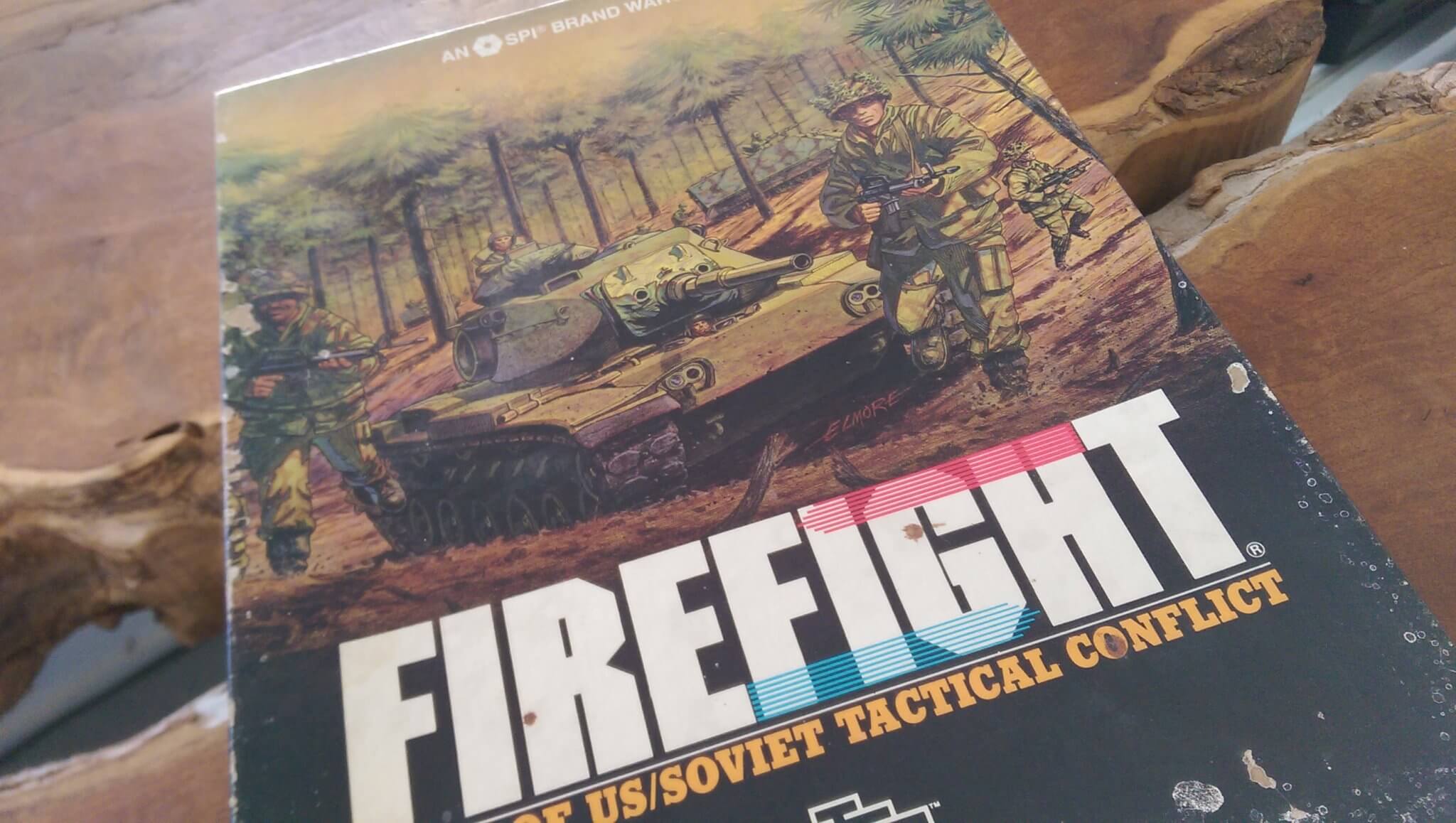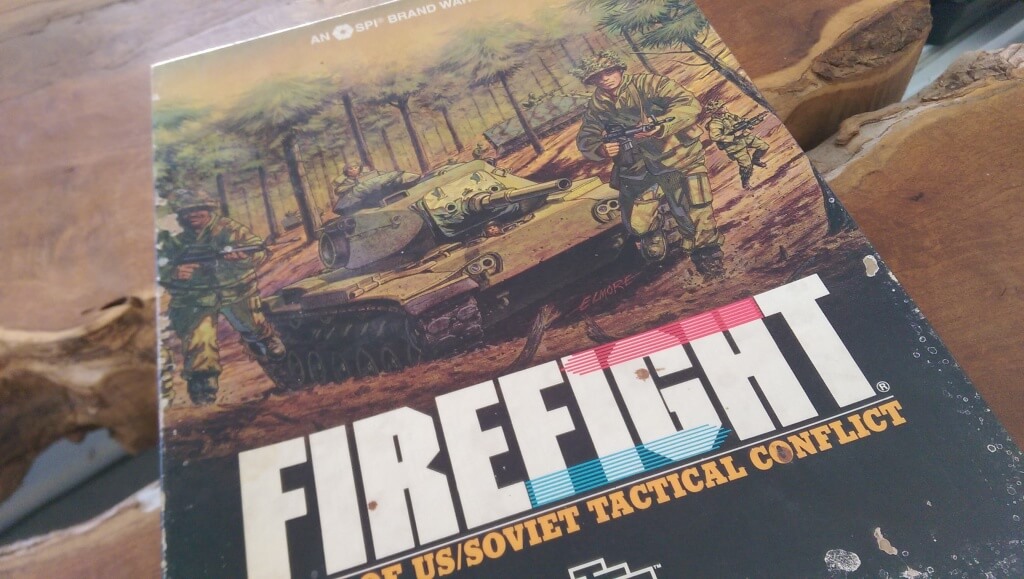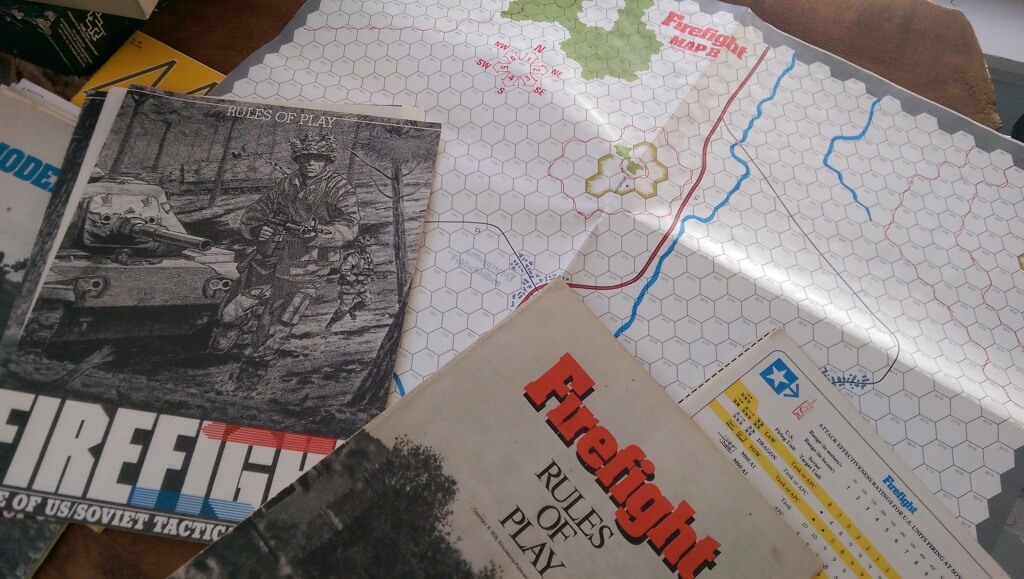Scott L Schickram in Wargamers on Facebook
“I was involved in the Army’s play testing of SPI’s “Firefight” in 1976. I was a mech infantry officer in the1st Cav Div. I had also played the Army’s “Dunn Kempf”, and other games. I was picked as a “guinea pig” for the project because of my background with wargames and because very few people wanted the assignment.
The great wargame designer James F. Dunnigan once wrote a piece about wargaming’s influence on NATO strategy and the Cold War. The Army only sporadically did table top gaming in the ’70s, and then basically as Staff Training Exercises. Dunn Kempf was a tactical terrain model wargame used sparingly to train small unit combat leaders. As a platoon leader, you might participate in Dunn Kempf a few hours a year. It was cumbersome to run.
In Ft. Hood, it was maintained in a Battle Simulation Center by an MI unit. The Army noticed that soldiers who played a lot of Dunn Kempf, for example MI guys in that unit, were getting 12-1 or better kill ratios defending against the Russians.
New players, such as line company commanders, got a mediocre 3-1 kill ratio. Improvements in tactics, such as multiple firing positions for tanks and ATGMs and the use of artillery seemed to have a dramatic effect.
The Army sought to acquire 1,000 Firefight wargames from SPI (then at $10 a copy). Veteran players of Firefight were also achieving superior results defending against the Russians, mirroring the experience with Dunn Kempf.
The Army had me learn all the details of Dunn Kempf and measure the results, learn and play Firefight about 10 hours a day for a week, then measure my improvement in Dunn Kemp.
I don’t know what the conclusions were, other than several of us became experts in Firefight (and somewhat burned out). NATO ultimately took a more aggressive stance in defending a possible Warsaw Pact invasion in Germany due to the proliferation of ATGMs and lessons learned from wargames.”


